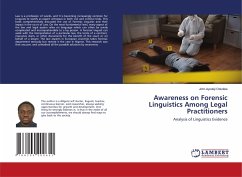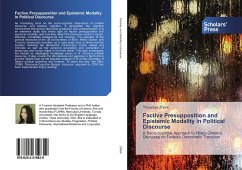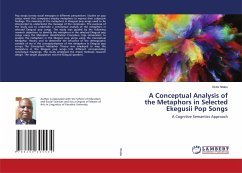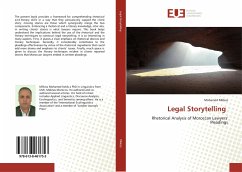
Hedging in Legal Discourse, An Analysis of Selected Wills and Bonds
Versandkostenfrei!
Versandfertig in 6-10 Tagen
24,99 €
inkl. MwSt.

PAYBACK Punkte
12 °P sammeln!
This study identifies and analyze the use of hedging in some selected legal genres. The data consists of six purposively selected documents from published wills and bonds and their frequency of occurrence were conducted to show the percentage and distribution for each of the corpus. Salager-Meyers (1997) perspectives were used for the identification and definition of the lexical items which signal hedging, Following the identification of the selected lexical items, the descriptive research design was adopted. The findings revealed that hedging is used in the writing and drafting of Wills and B...
This study identifies and analyze the use of hedging in some selected legal genres. The data consists of six purposively selected documents from published wills and bonds and their frequency of occurrence were conducted to show the percentage and distribution for each of the corpus. Salager-Meyers (1997) perspectives were used for the identification and definition of the lexical items which signal hedging, Following the identification of the selected lexical items, the descriptive research design was adopted. The findings revealed that hedging is used in the writing and drafting of Wills and Bonds as a strategy by which legal writers mitigate and soften the force of their utterances, it also revealed that permission and its modifying device can manifest as hedging in the two genres. The study recommends among others the need to align with ESP practitioners for material design and production in the teaching English for Legal purpose at the university level.












